 Partial Fasting: Healing Benefits and Top 5 Ways To Do It
Partial Fasting: Healing Benefits and Top 5 Ways To Do It
Partial fasting is one of the most ancient and incredible healing strategies. It has countless health benefits, including reducing inflammation, increasing energy, weight loss, fat burning, and reducing the risk of chronic disease. However, you may not be ready for an extended fast yet.
This is where partial fasting comes into your life. Partial fasting is a powerful strategy where you can still eat and benefit from healthy nutrients, while only restricting certain foods and calories for a period of time. Practicing partial fasting, you may still experience powerful health benefits without doing a strict water fast.
In this article, you will learn about the benefits of fasting, what partial fasting is, and the five most common partial fasts. You will learn about the benefits of partial fasting, and its downsides compared to water fasting. I will also share my tips on best practices and how to break your fast the healthy way.
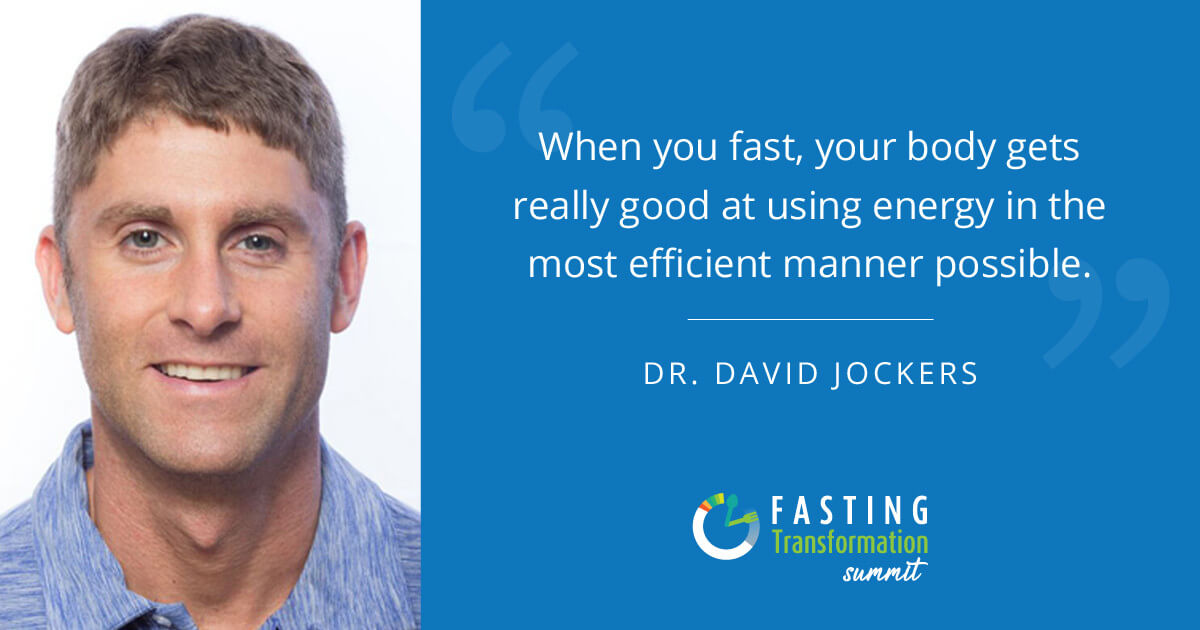
Benefits of Fasting
Fasting is an incredible healing strategy that has been used by ancient healers and philosophers across cultures throughout history. However, its benefits have been forgotten and ignored by modern medicine.
Thankfully, fasting has been making its come back, becoming increasingly popular among holistic health enthusiasts and practitioners. More and more alternative health and holistic health practitioners suggest fasting as a beneficial healing strategy. I am personally passionate about fasting, practice it myself, and recommend it to my patients, friends, and family regularly. I believe that fasting is the most ancient, powerful, and inexpensive way to improve your health and reduce the risk of disease.
Research has shown that fasting practices have some remarkable benefits. It may reduce inflammation and pain, increase metabolic flexibility, and energy efficiency, boost your mental health, reduce the risk of chronic disease, and more.
Benefits of Fasting Include:
-
- Stimulating fat burning (1, 2, 3, 4)
- Reducing inflammation (5)
- Improving your energy levels (6, 7)
- Taking the stress off of your digestive system (8)
- Stimulating cellular autophagy (9)
- Improving genetic repair mechanisms (10)
- Stimulating the development of stem cells (11, 12)
- Improving cellular sensitivity (13)
- Reducing the risk of chronic disease (14)
- Improving your relationship with food
- Enhancing your mental health (15)
- Allowing spiritual growth and fine-tuned intuition
If you are interested in the benefits of fasting, read this article.
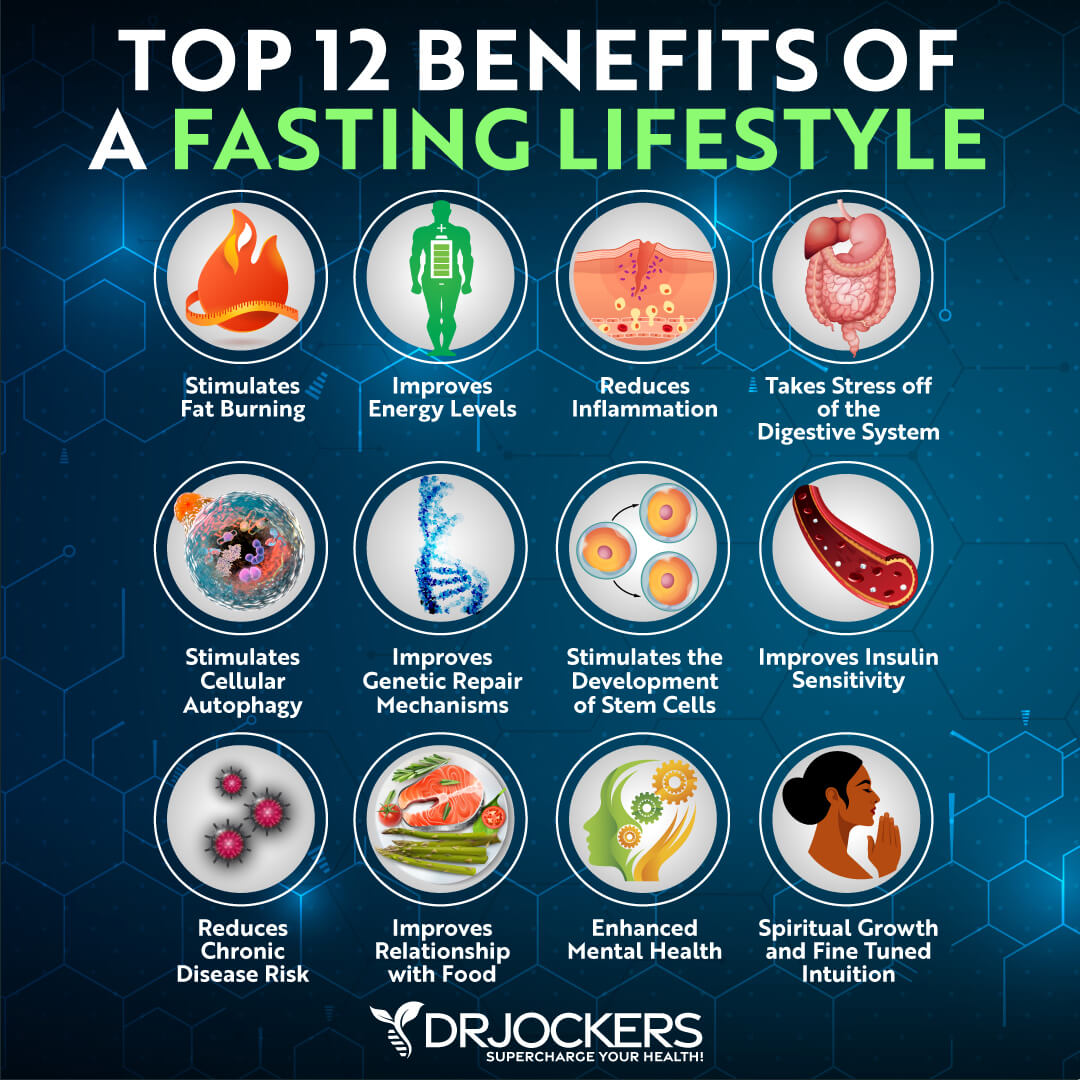
The Fasting Transformation Book
If you want to improve your metabolic health and burn fat, improve your brain and overall energy levels…intermittent and extended fasting are incredibly powerful strategies.
That is why I want to introduce you to my best-selling book, The Fasting Transformation. It goes into the most recent scientific research and strategies for implementing intermittent and extended fasting into your life.
This book is the best book on fasting the world has ever seen and I have read them all! It is now, my great honor to present this to you and I am deeply appreciative of your support!
What is Partial Fasting
Normally, during fasting or intermittent fasting, you would be refraining from all food for a certain period of time. Whether it’s 12 to 16 hours without food during intermittent fasting, 23 hours without eating practicing OMAD (One Meal a Day), or going without food for a day or several days on a water fast, during your fasting window you must stay away from food.
However, if you are not ready for such a commitment to do an actual full fast, doing a partial fast may still be beneficial for you. A partial fast is a fast in which you take in calories but restrict a number of key food groups and typically reduce your overall number of calories.
For example, during a Juice Fast, you would still be consuming green juices, or in some cases even some green smoothies, during your fast, but staying away from other types of foods, while the Daniel Fast may allow you to eat a wide variety of fruits and vegetables, but stay away from other foods, such as meat, dairy, and processed foods. The Daniel Fast is also the only partial fast that may not necessarily restrict calories.
Simply limiting your food choices and possibly also limiting your calorie intake may provide your body with numerous health benefits. Partial fasts still give a break to your digestion by eliminating processed and other inflammatory foods from your diet. By allowing you to take in nutrient-dense liquids or foods, partial fasts nourish your body on a cellular level while allowing healing. Partial fasting may extend your lifespan by urging your body’s cells to conserve and use energy more efficiently.
Partial fasts may be easier or more appropriate for some people. They are also a fantastic strategy to introduce yourself to a healthier diet or a fasting lifestyle. If you are looking for an extended fast, it may be safer, easier, and may be done longer than water fasting (16, 17).
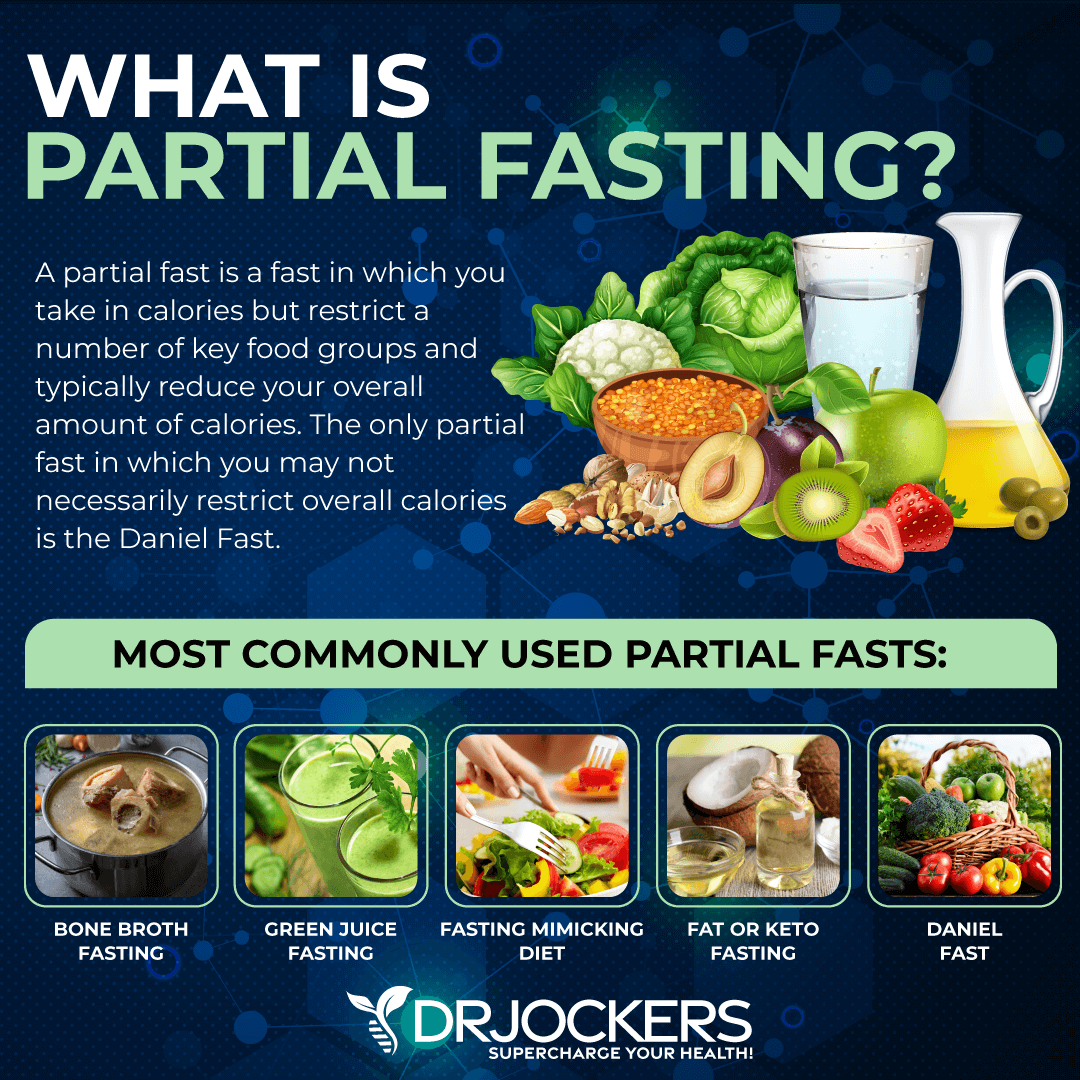
5 Most Common Partial Fasts
There are a variety of ways you can practice partial fasting. The five most common partial fasts include the Bone Broth Fast, Green Juice Fasting, the Fasting Mimicking Diet®, the Fat/Keto Fast, and the Daniel Fast. Let’s look at each form of partial fast one by one to help you decide what’s right for you.
Bone Broth Fast
Bone broth fasting combines two of the oldest and most profound healing strategies: fasting and bone broth. Bone broth is a nutrient-dense elixir made from simmering bones and connective tissue from animals.
Bone broth is incredibly rich in bioavailable minerals, such as magnesium, potassium, selenium, calcium, and phosphorus, and anti-inflammatory compounds to replenish nutrients in your body and improve your health. It is a fantastic source of amino acids that are the building blocks of protein and play an essential role in your body, and also a great source of collagen. Bone broth may benefit your digestion, reduce food sensitivities, repair and strengthen your joints, ligaments, and tendons, support your metabolism, aid weight loss, help detoxification, aid immunity, improve your skin and hair, reduce signs of aging, It’s easy to digest and can become part of any healthy diet even if you are not fasting (18, 19).
For your Bone Broth Fast, you may use homemade made from any animal with bones, including fish, chicken, turkey, beef, lamb, bison, and venison, pre-made organic bone broth from quality sources, such as Kettle & Fire, or powdered organic bone broth collagen protein. Always make sure to use organic bone broth from pasture-raised beef, free-range poultry, or wild-caught fish. Drink 24 to 48 oz of bone broth during each day of your fast, and drink plenty of filtered water as well. You may do a Bone Broth Fast for three to seven days.
If you want to learn more about Bone Broth Fasting, read this article.
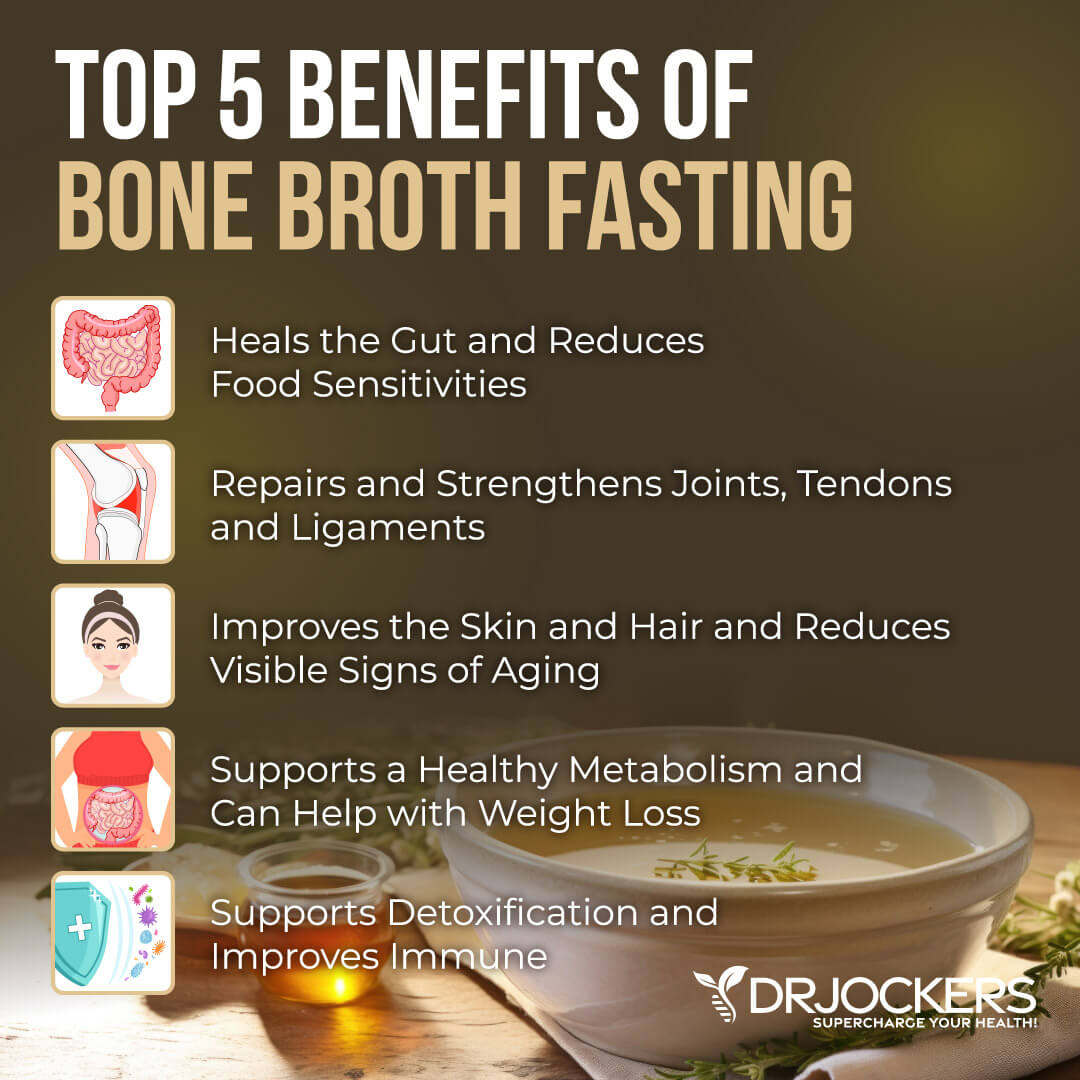
Green Juice Fast
Green Juice Fasting is a very popular and incredible strategy to repair your body, boost your energy levels, and improve your overall health. Green juices are made from several servings of greens, vegetables, fruits, herbs, and superfoods to create a nutrient-dense, energy-filled, powerful drink. Green juices contain high doses of minerals, vitamins, and live enzymes in their most bioavailable form. Therefore they can become a beneficial part of any diet, even if you are not fasting.
Unlike green smoothies, green juices do not contain any fiber. This allows your body to receive all the micronutrients and enzymes quickly without having to spend time on the digestive process. Instead of digestion, all the nutrition and energy from your green juices can be used for cleaning, repair, and healing.
Green Juice Fasts are also called green juice detoxes or green juice cleanses since they are an incredible method of detoxification. Green Juice Fasts may cleanse your body on a cellular level, give your digestion a break, boost your energy levels, repair tissue damage, and boost your overall health. They may benefit your digestion, improve your immune system, oxygenate your skin, reduce signs of aging, aid weight loss, reduce toxic overload, promote alkalinity, boost your brain and mental health, and protect your body from disease (20, 22, 23, 24, 25, 26, 27).
Green Juice Fasts may last from one day to weeks. The most popular Green Juice Fasts are between three and seven days long. While on most Green Juice Fasts, all you are drinking is three to six cups of green juice a day, some may include a green smoothie in the evening as well.
To make the best green juices for your Green Juice Fast, always include some hydrating veggies, such as cucumbers, celery, or bok choy, some dark green leafy vegetables, such as kale, spinach, or collard greens, low glycemic fruits, such as lemons, limes, or green apples, some herbs, such as ginger, turmeric, parsley, or mint. You may also add a splash of superfoods, such as chlorella or spirulina. Make sure to use organic ingredients. To learn more about Green Juice Fasting, read this article.
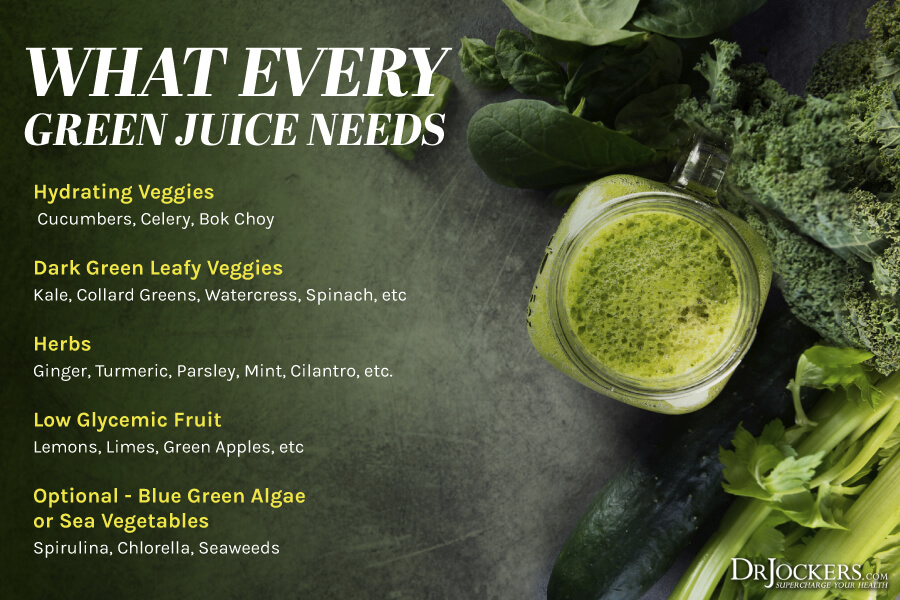
Fasting Mimicking Diet® (FMD®)
The Fasting Mimicking Diet®, or FMD® is a diet that provides you with the benefits of fasting without depriving your body of food and nutrients. The FMD® is a partial fasting plan that is high in nutrients, low in protein, and low in carbohydrates.
The FMD® is basically a 5-day protocol that you can do every 8 to 12 weeks or every month depending on your health goals. The FMD® protocol lays out how many calories and the ratio of macronutrients you can consume every day (28).
Before starting with the FMD® protocol, follow a low protein diet for about a week. Your protein sources should be fish and vegetables. I also recommend that you take omega-3 supplements this week.
While on the FMD® protocol, follow this plan:
- Day 1: Restrict your calories to 1,100 calories a day. 500 of these calories should come from complex carbohydrates and 500 from healthy fast. About 100 calories or 25 grams of plant-based proteins are also allowed, mainly from nuts.
- Day 2 – 5: During the last for days, your calories are restricted to 800 calories only with 400 calories from complex carbs and 400 calories from healthy fats.
- Day 6: Though your FMD® is officially over, day 6 is a transition day. Follow a diet rich in complex carbs, such as vegetables, rice, and fruits. Limit your consumption of fish, meat, cheese, milk, saturated fats, and pastries. It is important to note that pastries and other foods with gluten, refined sugar, and highly processed ingredients are never healthy, even if you are not fasting. If you eat dairy, it is important that you choose organic dairy products.
Practicing FMD® may beneficially change biomarkers associated with inflammation, aging, and poor health. FMD® may reduce inflammation, improve your immune system, enhance cellular function, improve your cholesterol, lower your blood pressure, improve your blood sugar, help weight loss, boost cognition, and reduce signs of aging (29, 30, 31, 32, 33). If you want to learn more about FMD®, read this article.
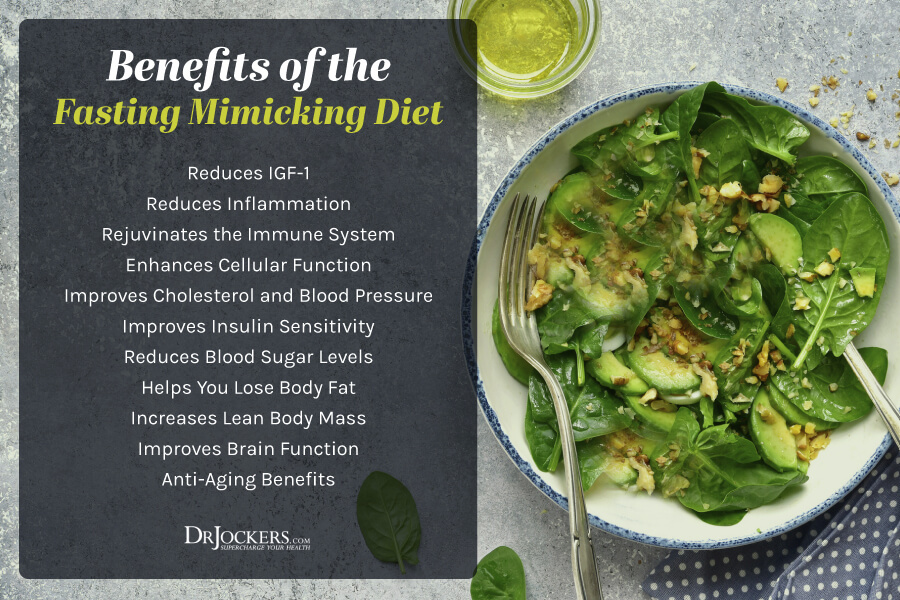
Fat or Keto Fast
Fat or Keto Fasting is a partial fasting strategy that is designed to achieve quick weight loss. It is often used by people who are practicing the Keto Diet and want to break a weight loss plateau or get back on track of a cheat day or holiday indulgences. The way Fat Fasting works is by raising the ketone levels in your blood and pushing your body into ketosis. Creating ketosis is a way to mimic the biological effects and health benefits of fasting even without fasting.
The benefits of Fast Fasting may include reduced inflammation, mitochondrial biogenesis, and reduced risk of disease. You may experience better fat burning, weight loss, reduced cravings, more energy, better mental clarity, clearer skin, and reduced signs of aging (34, 35, 36, 37, 38).
During the Fat Fast, you need to focus on a high-fat and low-calorie diet between 500-1000 calories per day. Roughly 90+% of your calories should come from fats. Practice the Fat Fast for 2 to 5 days, then continue on with a higher calorie Keto diet possibly combined with Intermittent Fasting.
While on a Fast or Keto Fast, focus on high-quality, healthy fats, such as avocados, coconut oil, olive oil, grass-fed butter, and pasture-raised eggs. You can eat antioxidants from greens, non-starchy vegetables, herbs, coffee, and lemons/limes. Look at the image below to understand how to set up a sample fat fast meal plan.
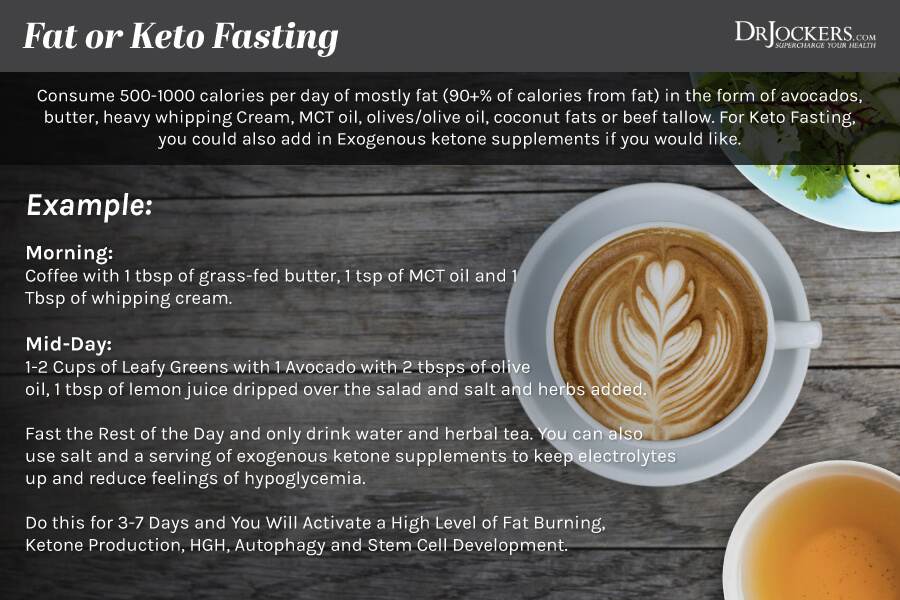
Daniel Fast
The Daniel Fast is possibly the most spiritual partial fast out there. It is based on the Biblical account of the life of the prophet Daniel. In the Bible, it is explained how Daniel fasted from meat, wine, and other foods while praying and seeking God (39, 40, 41, 42).
The Daniel Plan is a nutrient-dense plan that may be beneficial for your health as a way of taking a break from an inflammatory diet and kick-starting a healthier way of eating. It is rich in vegetables, fruits, legumes, nuts, seeds, whole grains, healthy fats, and water. It is a nutrient-dense, plant-based diet with added spiritual benefits, especially when practiced in combination with prayer or other spiritual practices, such as meditation, chanting, breathing exercises, and spiritual rituals.
You may practice the Daniel Fast anywhere from 10 to 21 days. Since it is a plant-based vegan diet that may run the risk of nutrient deficiencies in the long-run, I do not recommend you practice this plan longer than 21 days. However, short-term it may provide you with countless spiritual and health benefits, such as supporting detoxification, strengthening your immune system, helping weight loss, improving your skin, and balancing your pH (43, 44, 45, 46, 47, 48).
On the Daniel Fast, focus on organic fresh vegetables, including greens, artichokes, asparagus, beets, broccoli, mushrooms, onion, and potatoes, organic low-glycemic index (GI) fruits, such as berries, lemon, lime, and green apples, a small amount of higher GI fruits, such as apricots, bananas, and mangoes, healthy fats, such as avocados, olives, and coconut oil, sprouted ancient grains or gluten-free grains, a limited amount of beans and legumes, raw, sprouted, or dry roasted nuts and seeds, herbs, and spices, water, herbal tea, green juices, and plant milk. Remove all meat, animal products, dairy, sugar, sweeteners, bread, processed foods, refined foods, and unhealthy fats for the period of your fast.
If you want to learn more about the Daniel Fast, read this article.
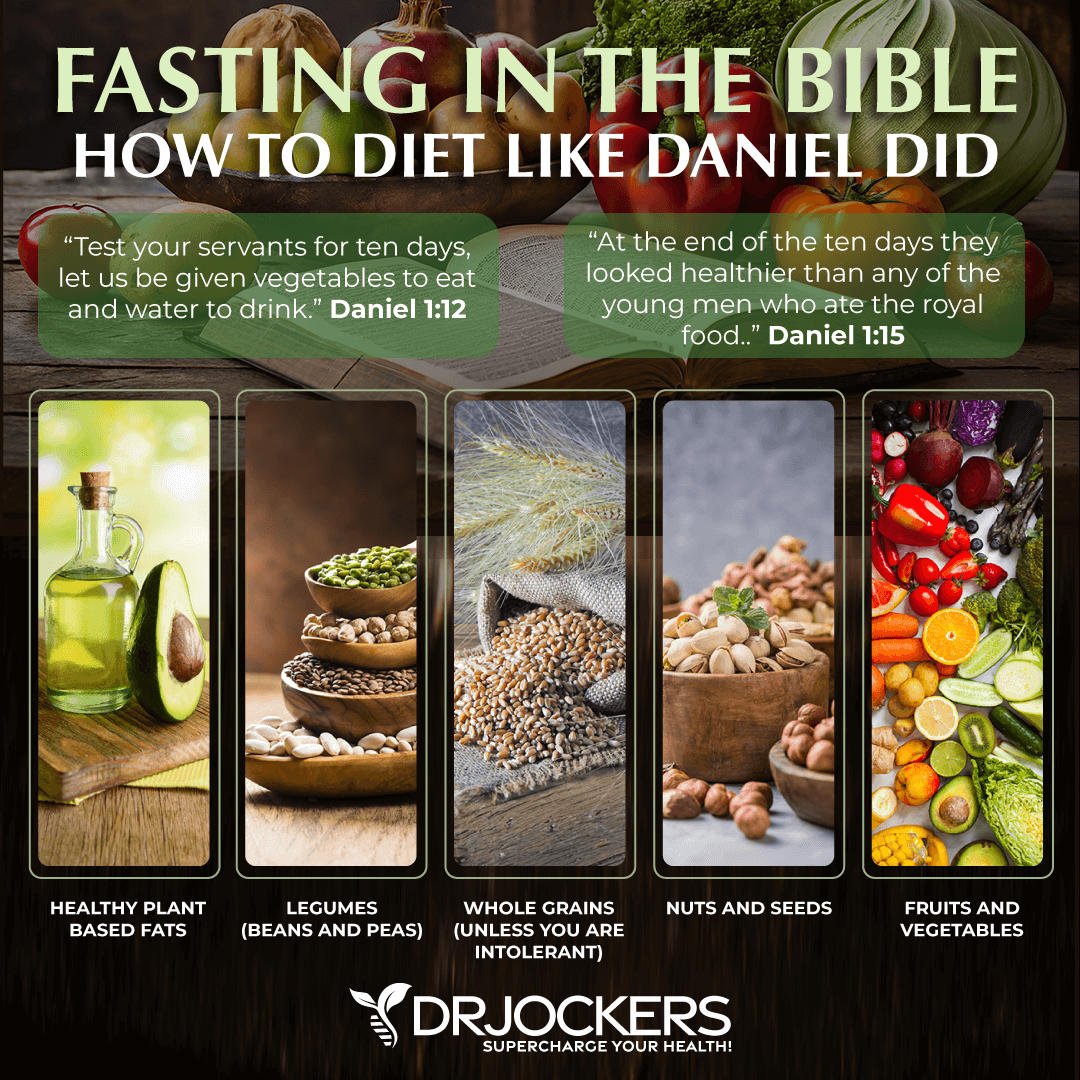
Benefits of Partial Fasting
There may be a variety of reasons that you feel drawn to partial fasting. Perhaps you are looking to kick-start a healthier diet, repair some tissue damage, and upgrade your health, or you may want to practice partial fasting as a stepping stone to intermittent fasting or a more extensive fast.
Partial fasting definitely has some health and lifestyle benefits. Let’s look at the benefits of partial fasting.

Easier and Safer to Do Than Water Fasting
Water fasting is not right for everyone. It is only recommended to those who are already very experienced in other fasting methods, such as intermittent fasting. Partial fasting is easier on your body and is safer for your health. You can practice partial fasting for a longer period of time, while still experiencing plenty of health benefits.
Taking Medications and Supplements
If you are taking medication, water fasting may not be right for you, and most certainly should be supervised by a doctor. Taking a variety of supplements may be beneficial for your health as well.
However, many medications and supplements need to be taken with food to avoid tummy upset or allow proper absorption. Partial fasting allows foods or nutrient-dense drinks on your diet, so you can still take your medication and supplements with food while fasting.
Provides Key Nutrients for Body
All partial fasting methods are highly nutrient-dense. You are not depriving your body of nutrients while practicing partial fasting. The added nutrient may help further repair any damage in your body and may lead to added health benefits.
Less Weight Loss Compared to Water Fasting
While weight loss is something that many look forward to while fasting, it may not be your goal. You may already be at a healthy weight, or you may only need to shed a couple of pounds. Since partial fasting involves nutrient-dense food choices, you will experience less weight loss compared to water fasting.
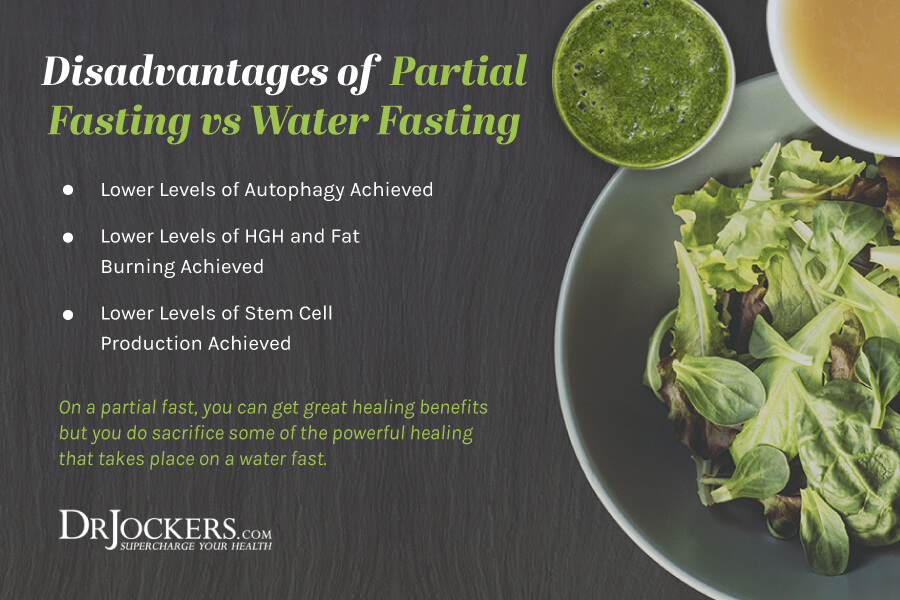
Downsides of Partial Fasting vs Water Fasting
While in some cases, partial fasting may be a better choice than water fasting, water fasting also has some added benefits that partial fasting doesn’t. Let’s look at the downsides of partial fasting compared to water fasting.
Less Autophagy
One of the main benefits of fasting is autophagy. Autophagy is your body’s natural method of detoxification. It happens when your body recycles and gets rid of old, damaged, abnormally developing, and excess cells that don’t benefit your health anymore. This process allows your body to make room for new, healthy, and well-functioning cells instead (49).
Autophagy happens when your cells are exposed to a stressor such as nutrient deprivation. During a water fast, there is a clear nutrient deprivation as a result of not eating anything for a period of time. Since you are consuming some nutrient-dense foods or liquids during your partial fast, your body will experience less autophagy as well. If you want to learn more about autophagy, read this article.
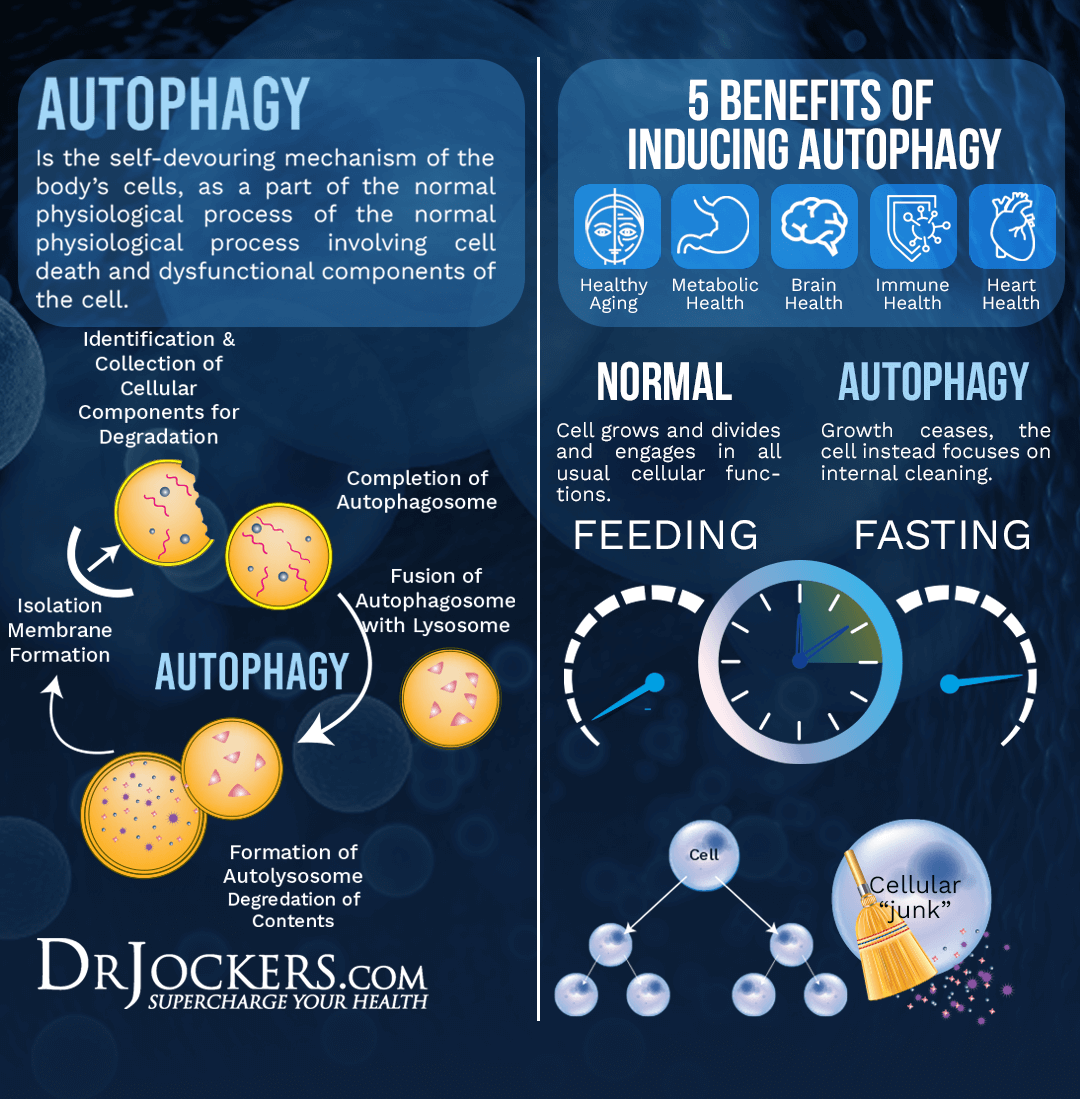
Lower HGH Levels
During times of food scarcity and famine, our cells have a greater lifespan. Fasting enhances cellular rejuvenation and allows the body to use less energy for cellular repair and new cell creation. Human Growth Hormone (HGH) is the main hormone that is responsible for this improve repair and healing mechanism during fasting.
Water fasting and intermittent fasting can lead to a major increase in HGH. HGH can improve cellular repair and stimulate fat burning, aid lean muscle development, and reduce inflammation at the same time. As a result, fasting may help you to increase your muscle mass helping to achieve a health fat-muscle ratio, healthy weight, and balanced insulin levels.
However, since you are not completely staying away from food during partial fasting, but simply limiting your food choices and calories, you will experience lower HGH levels compared to what you would on water fast (50, 51, 52, 53).
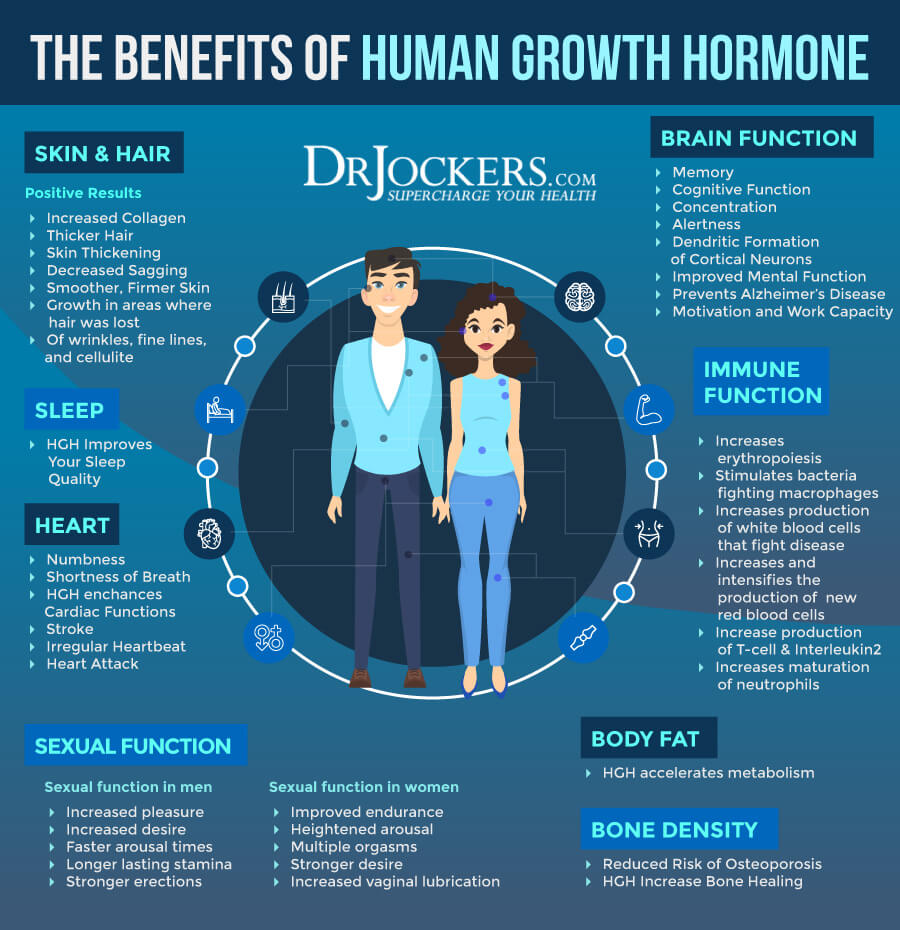
Lower Stem Cell Production
As you age, your intestinal stem cells lose their ability to renew. This decline in stem cells may make it more difficult for you to recover from infections and other health issues. The good news is that fasting is a fantastic way to internally stimulate stem cells to repair damaged areas of your body.
Research has found that fasting particularly benefits stem cell production in certain areas of your body, such as your intestines. Researchers learned that as short as a 24-hour fast can improve intestinal stem cell function and stem cell production. However, since on a partial fast, you are still consuming food and not fasting completely, it may not result in the same benefits (11, 12, 54).
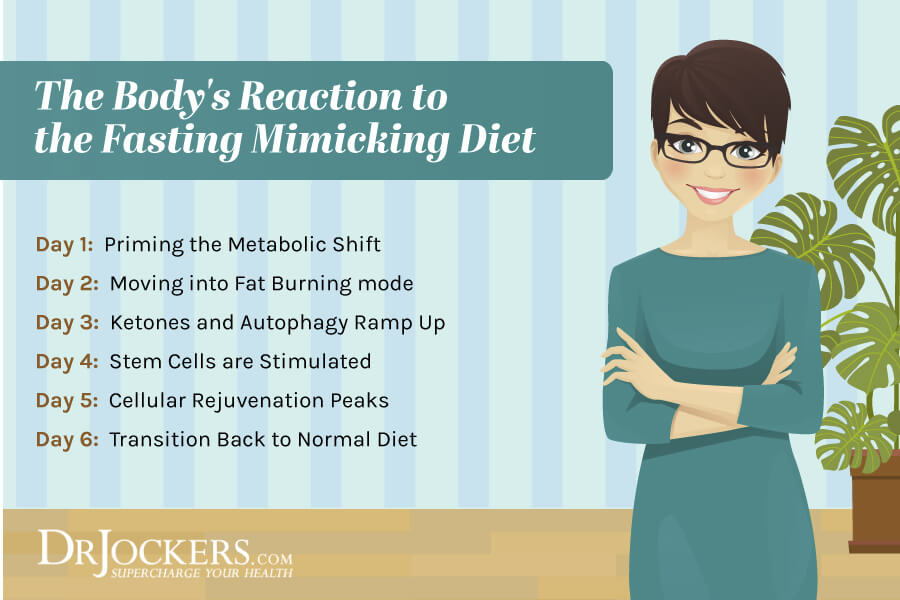
Best Practices
Understanding the benefits of partial fasting, you may be interested in jumping on board. However, you may still wonder what is the best way to follow.
Based on research on the benefits of FMD®, five days of consuming under 50 percent of daily calorie needs seems to be an ideal time period and calorie amount to receive an optimal level of autophagy and stem cell production. You may choose any of the five methods, I’ve shared in this article for five days (28).
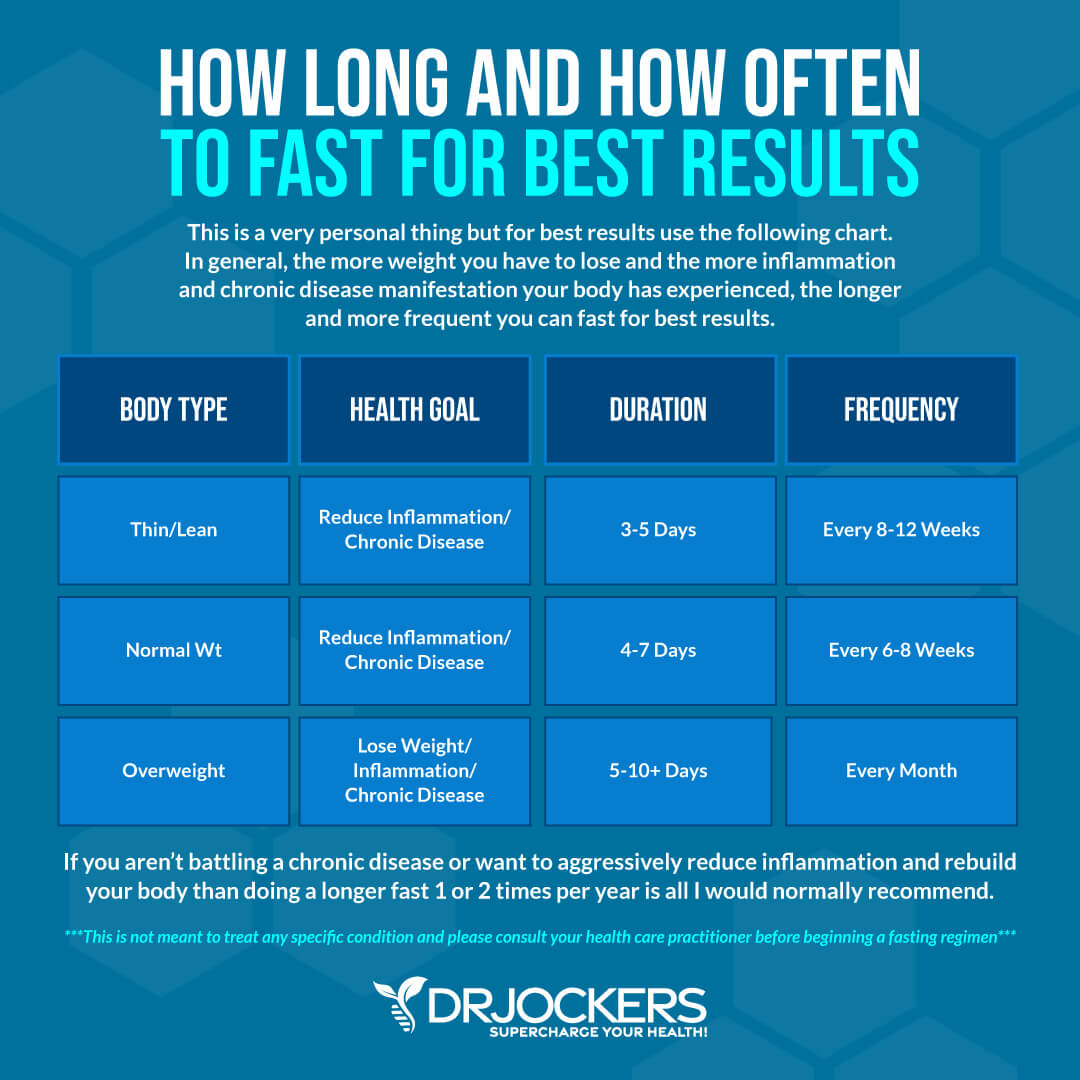
Breaking a Partial Fasting Regimen
Breaking your fast is just as important as your actual fast. If you eat too much food or certain types of foods too soon after an extended fast, including partial fasts, you may run into digestion problems, or even run the risk of refeeding syndrome, a potentially fatal medical condition (55).
After a 3-day fast, I recommend a one-day recovery period. After 5-6 days of fasting, I recommend two days, and after an 8 -10 days of fasting, three days to recover. Reintroduce foods slowly. After a five day fast, eat 30 to 40 percent of your normal calorie load on day one of your recovery, and increase it to 50 percent of your normal load on day two.
During your recovery period, be gentle with yourself. Make sure to focus on nutrient-dense foods that are easy on your digestion, such as green juices, green smoothies, protein shakes, bone broths, steamed vegetables, olives, fruits, avocados, and fermented fruits. Remember to continue eating a healthy diet abundant in nutrient-dense foods after your partial fast and recovery period.
To learn more about how to break your partial fast, read this article.
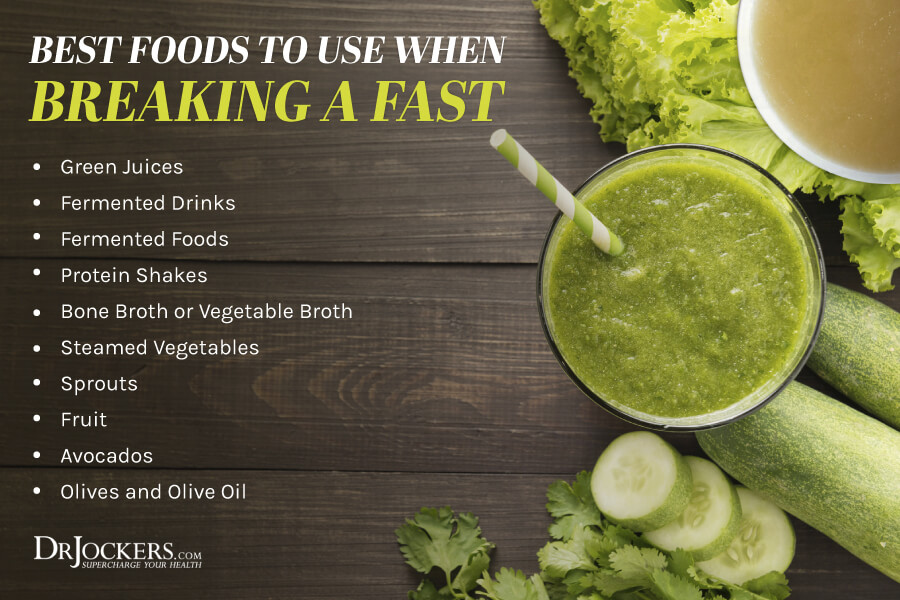
Final Thoughts on Partial Fasting
Fasting is one of the most ancient and powerful healing strategies with countless health benefits, including reducing inflammation, increasing energy, weight loss, fat burning, and reducing the risk of chronic disease.
However, if you are not quite ready for a full on fast, you may benefit from partial fasting, a powerful strategy where you still consume healthy nutrients but restrict certain foods and calories for a period of time. If you follow my tips and strategies in this article, you can experience the full benefits of a partial fast. For more info, check out my entire Fasting Transformation Quickstart program here.
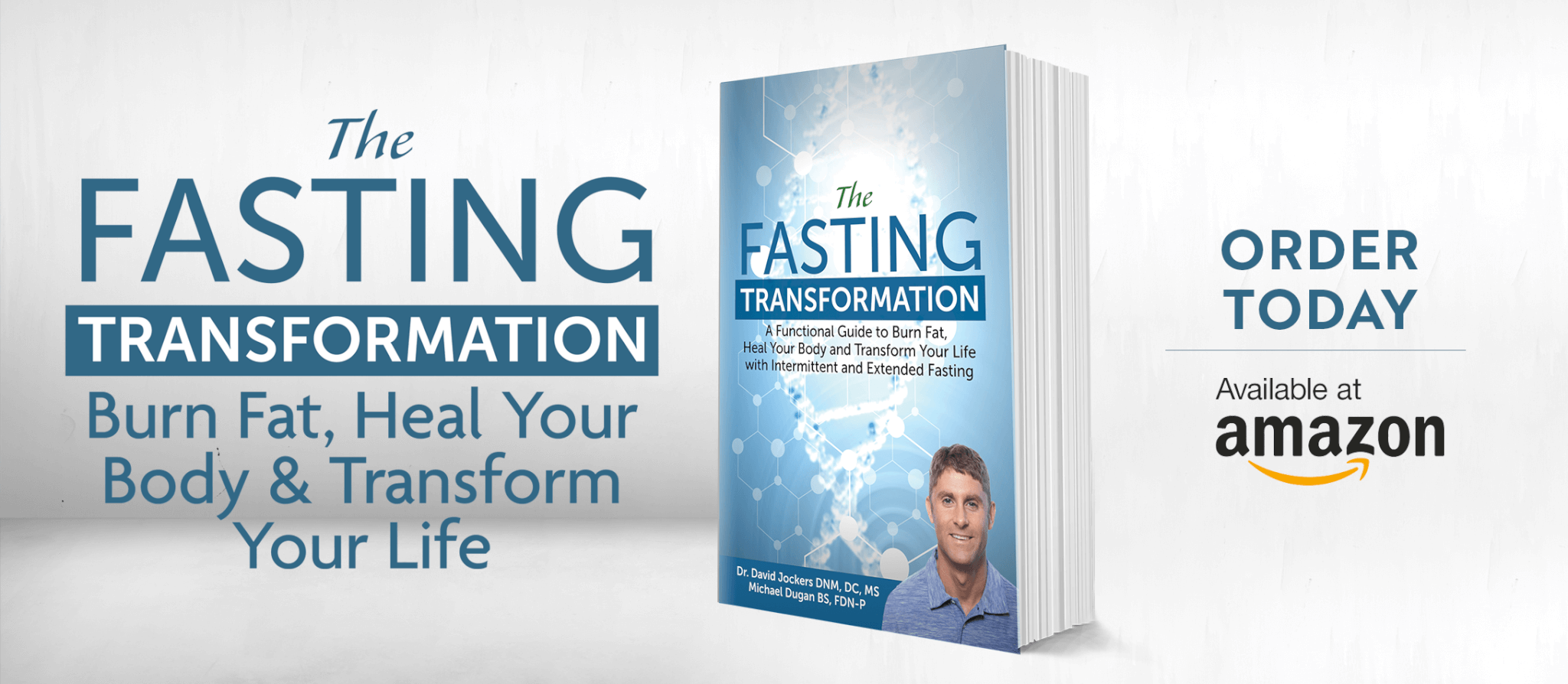



hi, i love your blog, and all the great info you provide me thru an email.
because google and facebook has so much power and they are censuring some of my favorite internet dr.s one of which is Dr. Mercola who introduced me to you, ive eliminated them from my life as well as pinterest and amazon. as much as i would looove to see your instagram posts of your sweet baby! consider putting it on email xo
Hey June, Yes, I am sorry to hear this as well! Thank you for sharing! Be blessed!